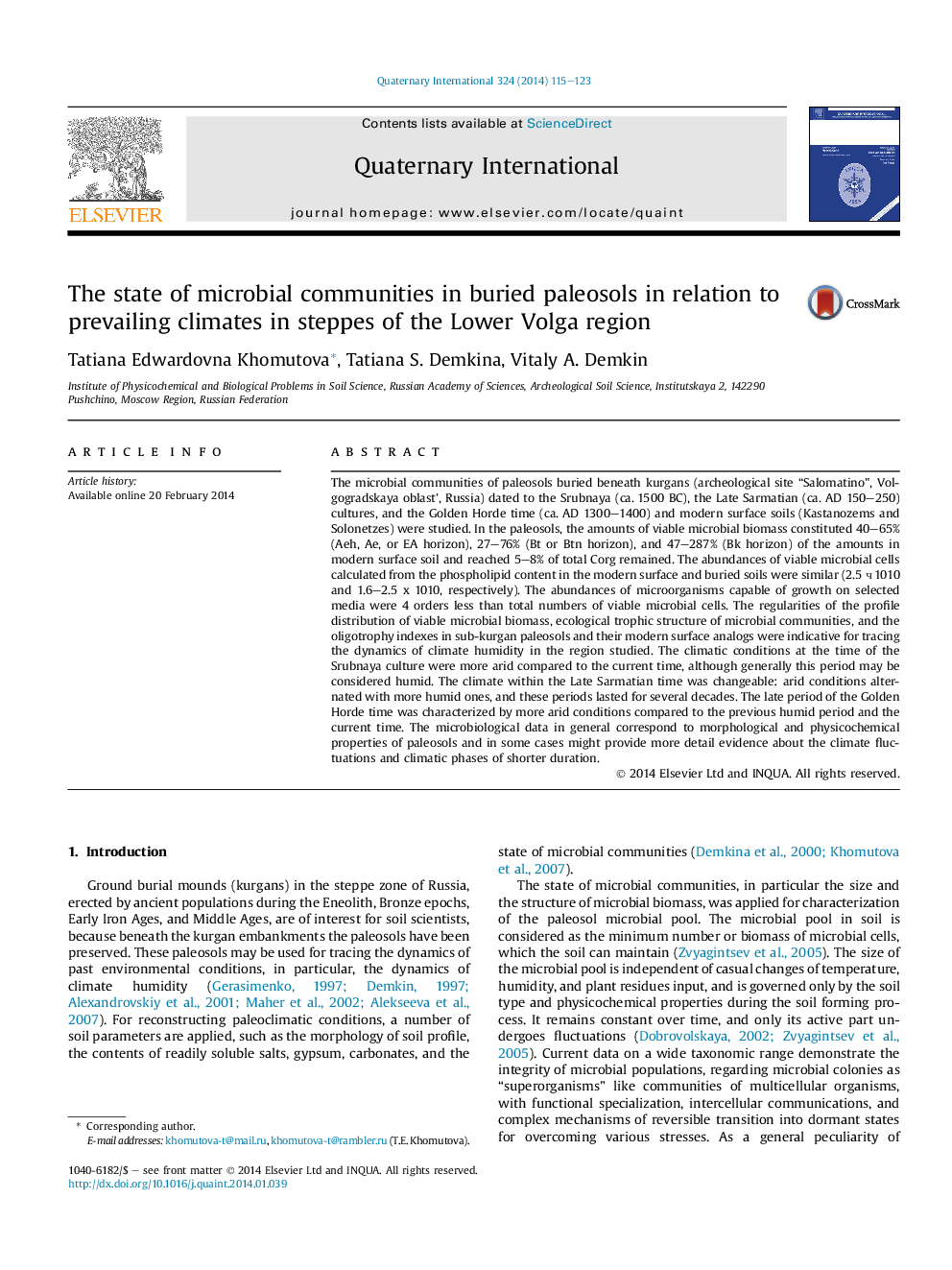| کد مقاله | کد نشریه | سال انتشار | مقاله انگلیسی | نسخه تمام متن |
|---|---|---|---|---|
| 1041423 | 1484168 | 2014 | 9 صفحه PDF | دانلود رایگان |
عنوان انگلیسی مقاله ISI
The state of microbial communities in buried paleosols in relation to prevailing climates in steppes of the Lower Volga region
ترجمه فارسی عنوان
وضعیت جوامع میکروبی در پالئوسول های دفن شده در رابطه با اقلیم غالب در استپ های منطقه ولگا
دانلود مقاله + سفارش ترجمه
دانلود مقاله ISI انگلیسی
رایگان برای ایرانیان
موضوعات مرتبط
مهندسی و علوم پایه
علوم زمین و سیارات
زمین شناسی
چکیده انگلیسی
The microbial communities of paleosols buried beneath kurgans (archeological site “Salomatino”, Volgogradskaya oblast', Russia) dated to the Srubnaya (ca. 1500 BC), the Late Sarmatian (ca. AD 150-250) cultures, and the Golden Horde time (ca. AD 1300-1400) and modern surface soils (Kastanozems and Solonetzes) were studied. In the paleosols, the amounts of viable microbial biomass constituted 40-65% (Aeh, Ae, or EA horizon), 27-76% (Bt or Btn horizon), and 47-287% (Bk horizon) of the amounts in modern surface soil and reached 5-8% of total Corg remained. The abundances of viable microbial cells calculated from the phospholipid content in the modern surface and buried soils were similar (2.5Â Ñ
 1010 and 1.6-2.5 x 1010, respectively). The abundances of microorganisms capable of growth on selected media were 4 orders less than total numbers of viable microbial cells. The regularities of the profile distribution of viable microbial biomass, ecological trophic structure of microbial communities, and the oligotrophy indexes in sub-kurgan paleosols and their modern surface analogs were indicative for tracing the dynamics of climate humidity in the region studied. The climatic conditions at the time of the Srubnaya culture were more arid compared to the current time, although generally this period may be considered humid. The climate within the Late Sarmatian time was changeable: arid conditions alternated with more humid ones, and these periods lasted for several decades. The late period of the Golden Horde time was characterized by more arid conditions compared to the previous humid period and the current time. The microbiological data in general correspond to morphological and physicochemical properties of paleosols and in some cases might provide more detail evidence about the climate fluctuations and climatic phases of shorter duration.
ناشر
Database: Elsevier - ScienceDirect (ساینس دایرکت)
Journal: Quaternary International - Volume 324, 4 March 2014, Pages 115-123
Journal: Quaternary International - Volume 324, 4 March 2014, Pages 115-123
نویسندگان
Tatiana Edwardovna Khomutova, Tatiana S. Demkina, Vitaly A. Demkin,
